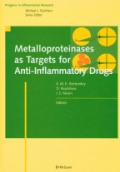Recent Developments in Transport Modelling: Lessons for the Freight Sector
Moshe E. Ben-Akiva, Hilde Meersman, Eddy Van de Voorde
ISBN: 9780080451190
Vydavateľstvo: Emerald Group Publishing
Rok vydania: 2008
Väzba: Hardback
Počet strán: 300
Pôvodná cena: 65,99 €
Výstavná cena:
56,09 €(t.j. po zľave 15%)
(Cena je uvedená vrátane 10% DPH)
Katalógová cena: 47.99 GBP
Nárok na
dopravu zdarma
Termín dodania na našu pobočku v Bratislave je približne 2-3 týždne.
This book is intended for transportation professionals interested in the role of Information and Communications Technologies (ICTs), and freight transport modeling and policy. It is dedicated to the memory of Professor Marvin L. Manheim, the father of modern Transportation Systems Analysis (TSA), who founded the World Conference on Transport Research Society, and is considered the foremost visionary of ICTs, transportation, and logistics. The book is divided into three main parts. The first part is about Professor Marvin L. Manheim and his path breaking contributions to transportation. The main chapter, written by him, is based on the keynote presentation he delivered at the opening session of the 1998 World Conference on Transport Research in Antwerp. It presents his vision for the role of ICTs in transport; a vision that was revolutionary in 1998 and is still valid and relevant today. The first part also includes an overview written by his widow and collaborator, Mary-Beth Manheim, describing his scientific contributions. The remainder of the book, parts two and three, is about freight transport modeling and policy, and presents an application of Manheim's TSA paradigm. More specifically, the second part presents the recent advances in freight modeling. The chapters begin with a model of the linkages between freight and the macro-economic environment, and end with models of the detailed aspects of logistics choices such as mode of transport, transshipments, and shipment size. Topics covered in part two also include predictions of production to consumption freight flows through the use of multi regional input-output models, choice analysis using freight market research surveys, and estimation of value of quality attributes and value of time in freight transport. Finally, part three of the book describes how the freight models, covered in part two, are used to develop local and regional transport policies.

